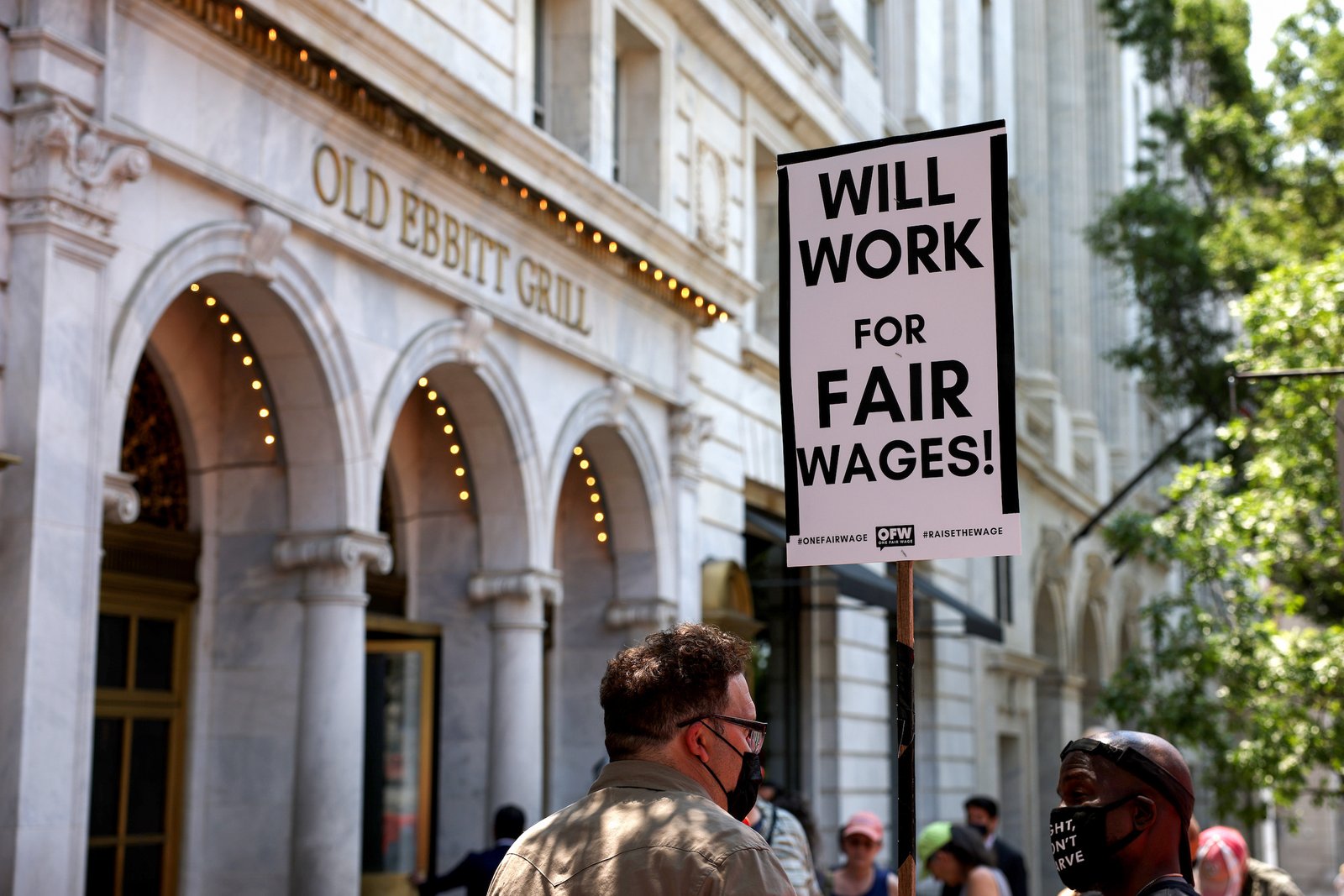[ad_1]
As the U.S. presidential election nears, Kamala Harris is touting her plans to establish an “opportunity economy” for all, while Donald Trump promises an elixir of tariffs and tax cuts to create “the biggest, greatest, and strongest middle class in the history of our country.”
Yet one thing is conspicuously absent from both candidates’ economic agendas: any mention of the need to ensure that every American can earn a living wage.
Currently, half of all working people in this country don’t make a living wage. The squeeze this puts on families is terrible, and it leaves many to wonder, “Do I pay the rent this month or fill my prescription? Should I cut back on food for the kids so I can make sure the heat stays on this winter?”
A living wage should be table stakes for any politician trying to appeal to American workers. A living wage is the amount people need to afford the most elementary level of decency for themselves and their families. It’s a floor.
A living wage doesn’t mean owning a home or going on vacation. It isn’t calculated to furnish a luxurious lifestyle. It is a simple assessment of what working families require to cover fundamental needs, including low-cost but nutritious meals from home; rent for a two-bedroom apartment for a family of four; reliable health insurance and typical out-of-pocket medical expenses; child care; transportation; other essential items to participate in society such as a phone, internet access, clothing, and soap; and a small margin for unexpected events, so that something like a car breaking down doesn’t lead to the loss of a job.
The median household income for 2023 was $80,610, according to the U.S. Census Bureau. But county-by-county cost-of-living estimates developed by the organization I run, Living Wage For Us, in partnership with the Economic Policy Institute, show that 92 percent of Americans reside in a place where $80,610 a year for a family of four is not enough to make ends meet.
The consequences are devastating. A lack of living-wage jobs has contributed to the rising ranks of the homeless. Between 40 and 60 percent of the nation’s unhoused population are employed but nonetheless cast to shelters or the streets because their compensation is so meager. Work that doesn’t pay a living wage has also contributed to growing food insecurity and a record-low percentage of Americans able to readily afford health care and medicine.
If there is hope to be found, it’s in the fact that myriad policies are available to tackle the core problem, including solutions that appeal to Americans on both sides of the political divide.

Anna Moneymaker/Getty Images
For example, providing universal pre-K would reduce the cost to employers of ensuring a living wage for workers—a boon to business. It would also address calls from Republican leaders to support American families with children, while promoting gender equity in a way that is important to many Democrats.
The government’s most straightforward remedy, of course, is to increase the minimum wage to a living wage.
But getting all the way there won’t be easy, at least not in one fell swoop. The federal minimum wage has been stuck at $7.25 an hour since 2009. However, more than 98 percent of Americans now find themselves in a location where the living wage is at least $20 an hour, and it’s far higher than that in many urban areas.
What’s encouraging is that Americans of all political stripes are clearly eager to close the gap. Blue states like California and Connecticut have some of the highest minimum wages in the country. In red states—such as Florida and Nebraska— voters have passed ballot measures raising the minimum wage.
An April survey by Data for Progress found that 86 percent of voters—including overwhelming majorities of Democrats, Republicans, and Independents—believe $7.25 an hour is not enough to maintain a decent quality of life. Nearly two-thirds of respondents (including 85 percent of Democrats, 65 percent of Independents, and 45 percent of Republicans) said they favored raising the minimum wage to $17 an hour.
Polling by JUST Capital, meanwhile, has found that for the past six years, Americans have indicated that their top priority for companies is that they pay their workers “fairly” and offer “a living wage that covers the cost of basic needs at the local level.” This desire cuts across all geographies, demographics, and political affiliations.
Both Kamala Harris and Donald Trump have talked a lot about the need to lower the cost of living. That’s undoubtedly critical with so many struggling to get by. But we need candidates who are also willing to address the other side of the problem and take up the mantle of a living wage. Americans deserve, and should demand, nothing less.
Michelle Murray is the CEO of Living Wage For US.
The views expressed in this article are the writer’s own.
[ad_2]
Source link
Share this content:
